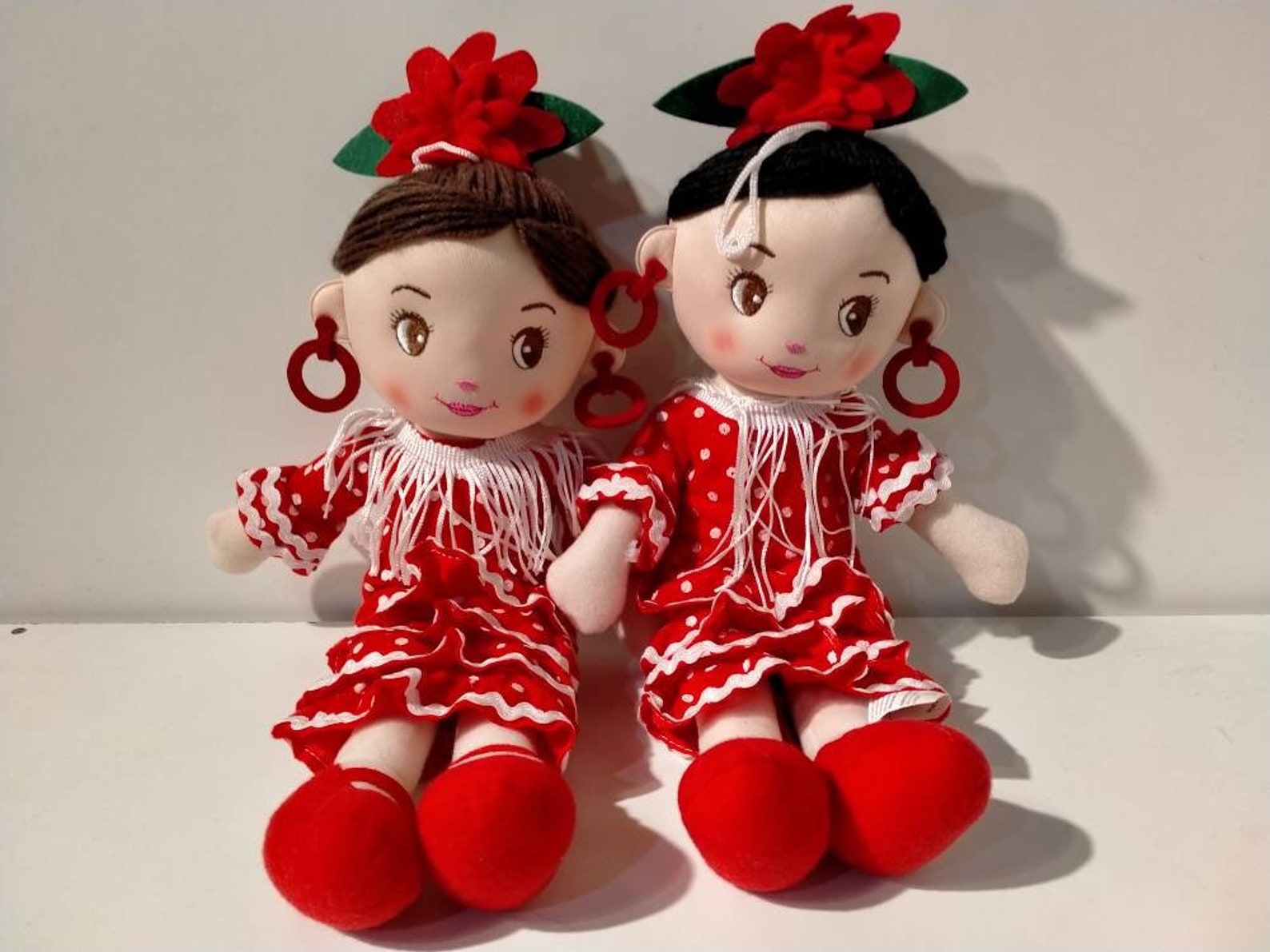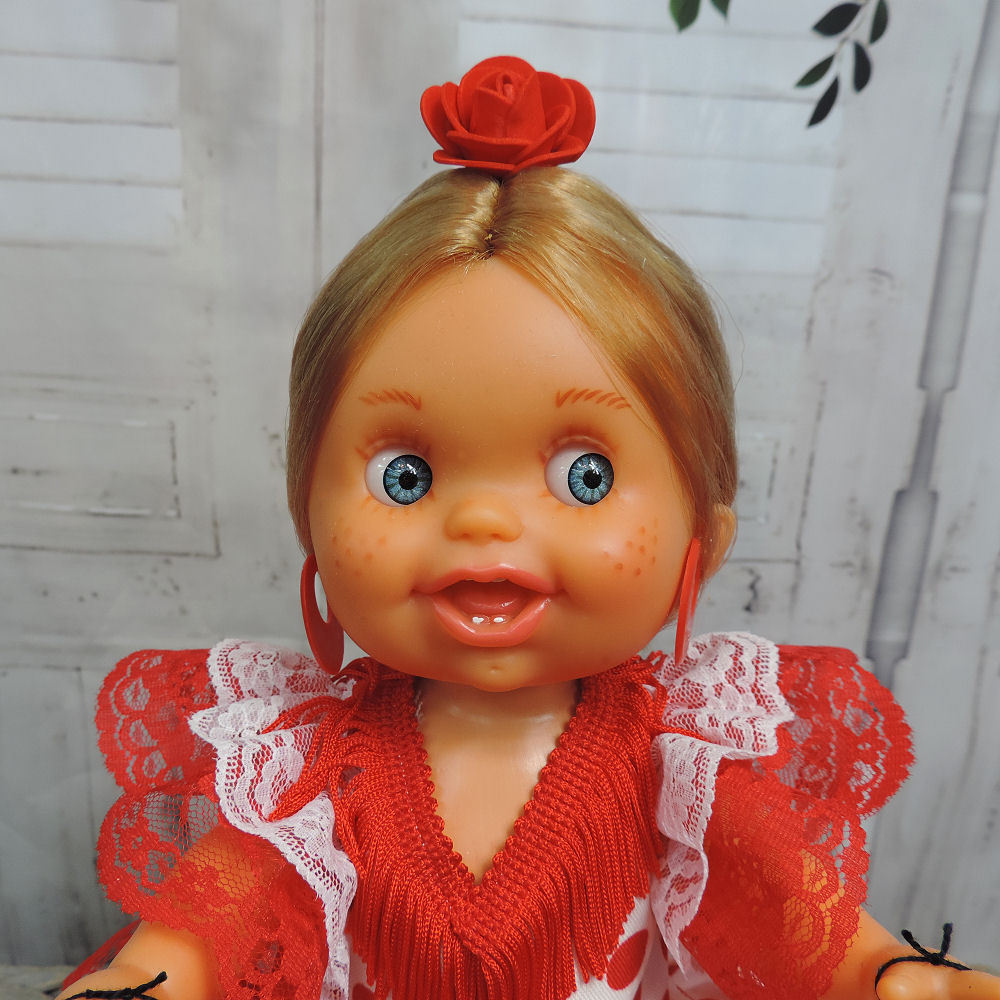Doll in spanish language – Dolls in the Spanish language hold a profound cultural significance, reflecting the rich traditions, artistry, and storytelling that permeate Spanish-speaking communities. From their humble origins to their contemporary manifestations, dolls have played an integral role in shaping the cultural identity of these vibrant societies.
This comprehensive guide delves into the etymology, types, and cultural significance of dolls in Spanish culture. We will explore their traditional uses, regional variations, and their role in art and literature. By uncovering the fascinating world of Spanish dolls, we gain a deeper understanding of the diverse cultural heritage that has shaped the Spanish-speaking world.
Etymology and Origins of the Word “Doll” in Spanish
The Spanish word for “doll” is “muñeca,” which has its roots in the Latin word “pupa,” meaning “young girl” or “child.” The term “muñeca” first appeared in the Spanish language in the 13th century and has since undergone several changes in meaning and usage.
In the early days of the Spanish language, “muñeca” was used to refer to a young girl or child, regardless of gender. Over time, the word began to be used more specifically to refer to a female child, and eventually came to be used exclusively for dolls.
The word “muñeca” has also been influenced by other languages, such as French and Arabic. The French word “poupée,” meaning “doll,” is thought to have influenced the pronunciation of “muñeca” in some Spanish dialects. The Arabic word “bubba,” meaning “doll” or “toy,” is also thought to have influenced the word “muñeca” in some Spanish dialects.
Types of Dolls in Spanish Culture
Dolls have been a part of Spanish culture for centuries, and there are many different types of dolls found in Spanish-speaking countries. These dolls vary in materials, construction methods, and traditional uses.Some of the most common types of dolls in Spanish culture include:
- Muñecas de trapo(rag dolls): These dolls are made from scraps of fabric and are often dressed in traditional Spanish clothing. They are typically given to children as toys, but they can also be used as decorations.
- Muñecas de porcelana(porcelain dolls): These dolls are made from porcelain and are often very delicate. They are often dressed in elaborate clothing and are often used as collector’s items.
- Muñecas de madera(wooden dolls): These dolls are made from wood and are often painted with bright colors. They are often used as toys, but they can also be used as decorations.
- Muñecas de papel(paper dolls): These dolls are made from paper and are often printed with colorful designs. They are often used as toys, but they can also be used as decorations.
Cultural Significance of Dolls in Spanish-Speaking Communities

Dolls have played an integral role in Spanish-speaking communities for centuries, transcending mere toys and becoming cultural icons imbued with symbolic meanings and cultural values. Their presence extends beyond childhood play, as they are deeply entwined with traditional festivals, rituals, and celebrations, serving as embodiments of cherished beliefs and traditions.
Dolls in Traditional Spanish Festivals and Celebrations
During the vibrant festivities of Spanish-speaking cultures, dolls take center stage as symbols of joy, fertility, and good fortune. In the renowned Fallas festival in Valencia, elaborate doll-like figures known as “ninots” are crafted and displayed throughout the city. These ninots often satirize current events or social issues, adding a touch of humor to the festivities.
On the night of the “Cremà,” the ninots are set ablaze in a spectacular bonfire, symbolizing the purging of negativity and the welcoming of new beginnings.Similarly, in the traditional “Romería del Rocío” pilgrimage in Andalusia, dolls are adorned with intricate costumes and carried by devotees as offerings to the Virgin Mary.
These dolls represent the pilgrims’ prayers and hopes for protection and blessings.
Contemporary Dolls in Spanish Art and Literature: Doll In Spanish Language

Dolls have become a significant medium of artistic expression in contemporary Spanish art and literature, offering unique insights into cultural norms and societal expectations. They are employed in various forms, including literature, film, and visual arts, to explore complex themes and provoke thought.
In literature, dolls often serve as symbols of innocence, vulnerability, and the fragility of human existence. They can also represent the complexities of childhood and the transition to adulthood. For instance, in the novel “The House of the Spirits” by Isabel Allende, the doll Clara serves as a metaphor for the protagonist’s lost innocence and the traumas of her past.
Dolls in Film
In Spanish-language films, dolls have been used to explore themes of identity, memory, and the uncanny. The 2006 film “Pan’s Labyrinth” by Guillermo del Toro features a young girl who uses a doll as a talisman to navigate the horrors of war and the complexities of her own imagination.
Dolls in Visual Arts, Doll in spanish language
In visual arts, dolls have been employed to challenge traditional notions of beauty and representation. Artists such as Frida Kahlo and Leonora Carrington have used dolls in their paintings and sculptures to explore themes of female empowerment, sexuality, and surrealism.
These dolls often challenge societal expectations and subvert traditional gender roles.
Regional Variations in Doll-Making Traditions
The diverse cultural landscape of the Spanish-speaking world is reflected in the wide array of doll-making traditions found across different regions. Local materials, craftsmanship techniques, and cultural heritage all play a significant role in shaping these unique practices.
In Mexico, for example, dolls known as “muñecas de trapo” (rag dolls) are a beloved symbol of the country’s rich indigenous heritage. These dolls are typically made from scraps of fabric, often adorned with intricate embroidery and vibrant colors. The traditional clothing and hairstyles of the dolls reflect the diverse ethnic groups of Mexico, showcasing the country’s cultural diversity.
In Spain, the region of Valencia is renowned for its “fallas” dolls, elaborate papier-mâché figures that are burned during the annual Fallas festival. These dolls often depict satirical or humorous scenes, reflecting the festival’s origins as a way to mock the aristocracy.
The craftsmanship involved in creating these dolls is highly skilled, with artisans spending months designing and constructing the intricate figures.
In Guatemala, the traditional “worry dolls” are believed to possess the power to absorb one’s worries and fears. These tiny dolls are made from colorful threads and often feature intricate designs. According to tradition, one should whisper their worries to the dolls before placing them under their pillow at night.
By morning, it is believed that the dolls have taken away the worries.
These are just a few examples of the diverse doll-making traditions found in Spanish-speaking regions. Each tradition reflects the unique cultural heritage and artistic sensibilities of the region, showcasing the richness and diversity of the Spanish-speaking world.
Dolls as Collectibles and Cultural Heritage
Spanish dolls have gained immense popularity as collectibles due to their intricate designs, cultural significance, and historical value. They are highly sought after by collectors worldwide, who appreciate their craftsmanship and artistic merit. These dolls serve as tangible representations of Spanish culture and heritage, showcasing the country’s rich traditions and artistic sensibilities.
Efforts are being made to preserve and promote traditional doll-making techniques and designs. Artisans and organizations are working to pass on their knowledge and skills to younger generations, ensuring the continuation of this cultural practice. Museums and cultural institutions are also playing a vital role in preserving and showcasing Spanish dolls, providing a platform for public appreciation and education.
Preservation and Promotion of Traditional Techniques
- Artisans and workshops are actively involved in teaching traditional doll-making techniques to apprentices and students.
- Museums and cultural centers host exhibitions and workshops to showcase the art of doll-making and educate the public about its cultural significance.
- Government initiatives and funding programs support the preservation of traditional crafts, including doll-making.
Final Summary

In conclusion, dolls in the Spanish language are not mere playthings; they are cultural treasures that embody the traditions, beliefs, and artistic expressions of Spanish-speaking communities. From their humble origins to their contemporary manifestations, dolls continue to captivate and inspire, serving as a testament to the enduring power of human creativity and cultural heritage.
Frequently Asked Questions
What are the most common types of dolls in Spanish culture?
Traditional types of Spanish dolls include muñecas de trapo (rag dolls), muñecas de cartón (cardboard dolls), and muñecas de madera (wooden dolls).
What is the cultural significance of dolls in Spanish-speaking communities?
Dolls play a significant role in Spanish festivals, rituals, and celebrations, symbolizing fertility, protection, and good luck.
How are dolls used in Spanish art and literature?
Dolls have been used as artistic mediums in Spanish literature, film, and visual arts, reflecting cultural norms and societal expectations.